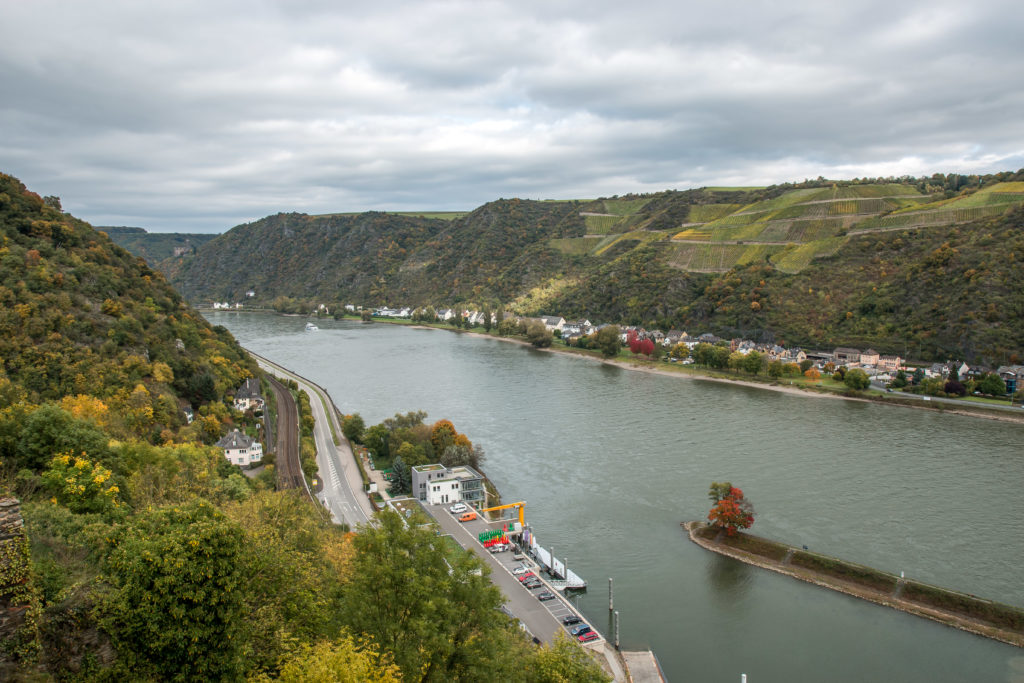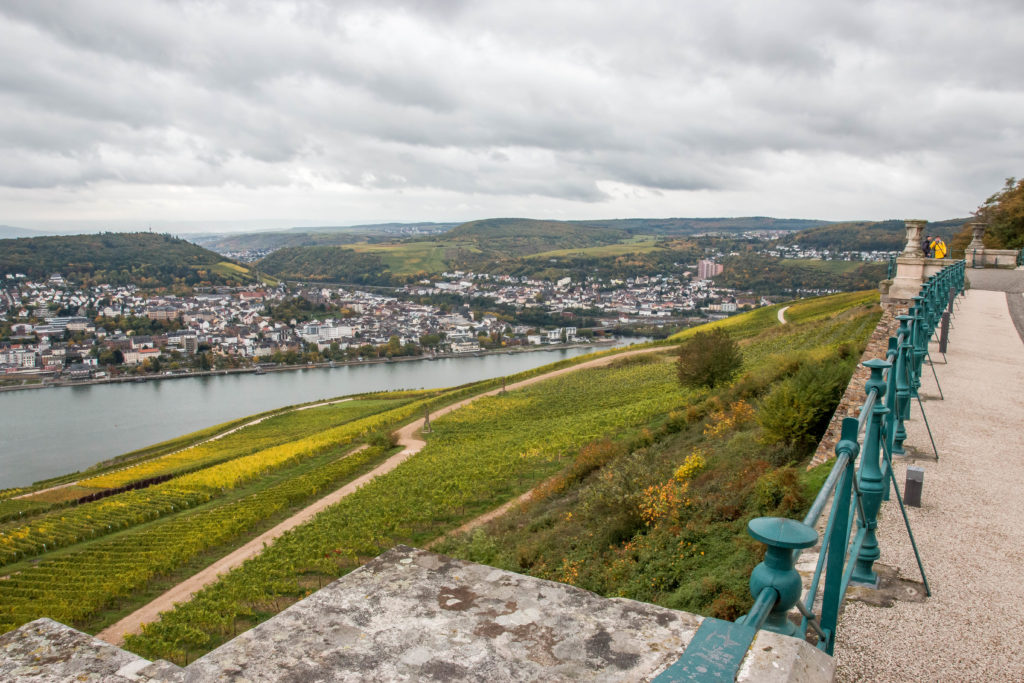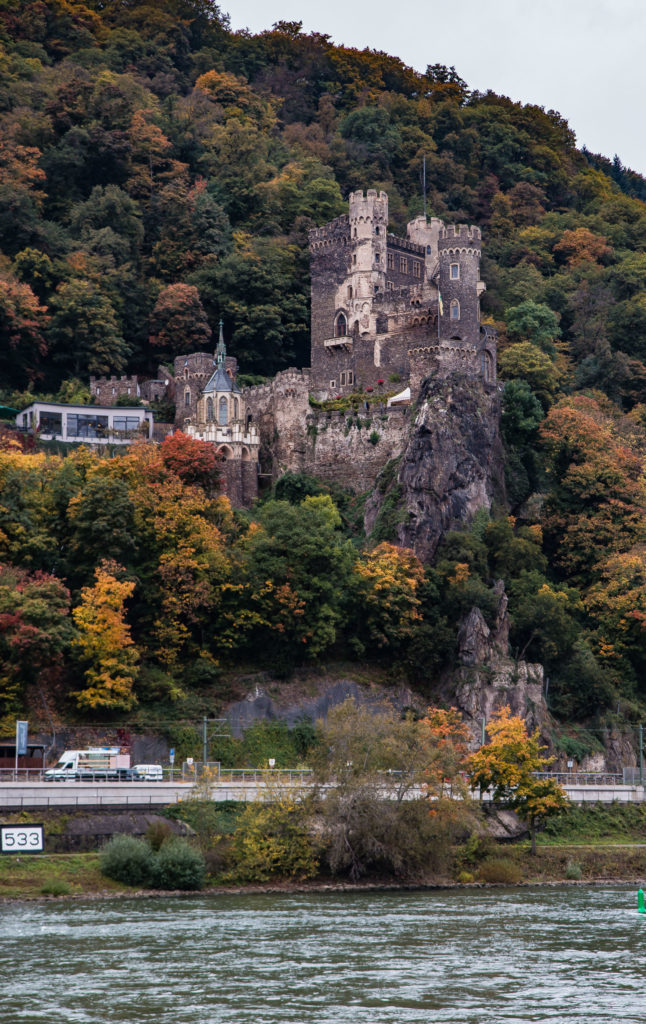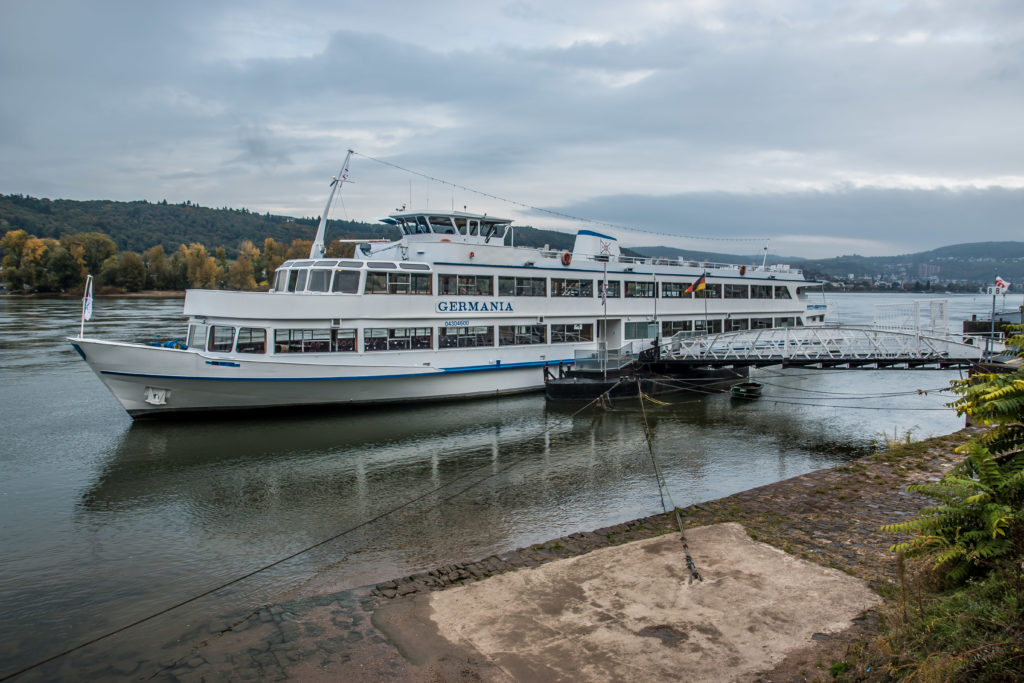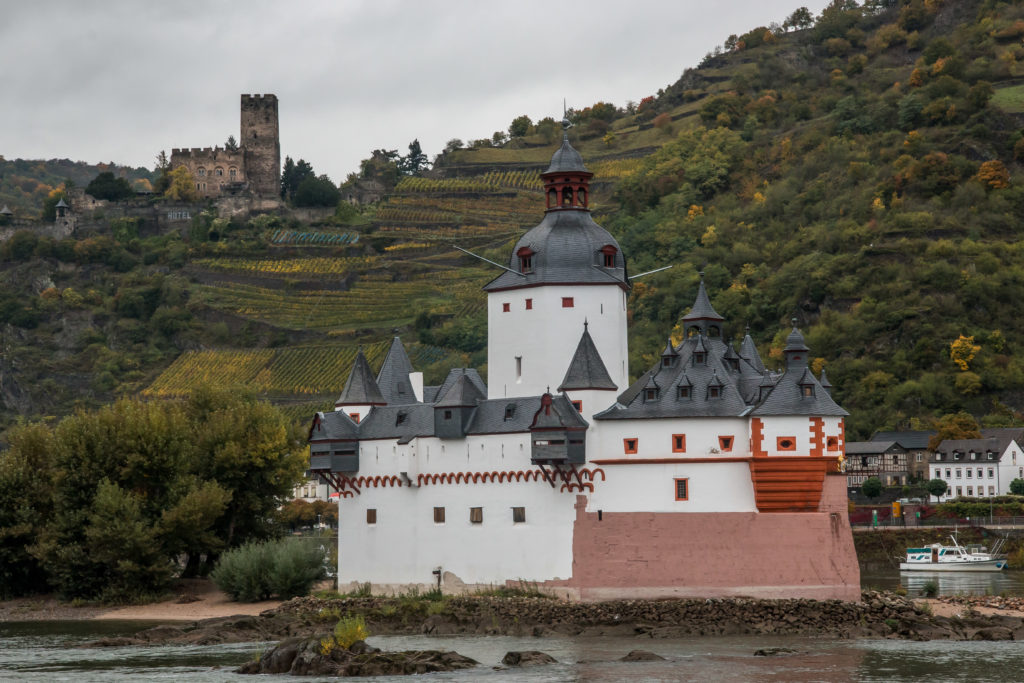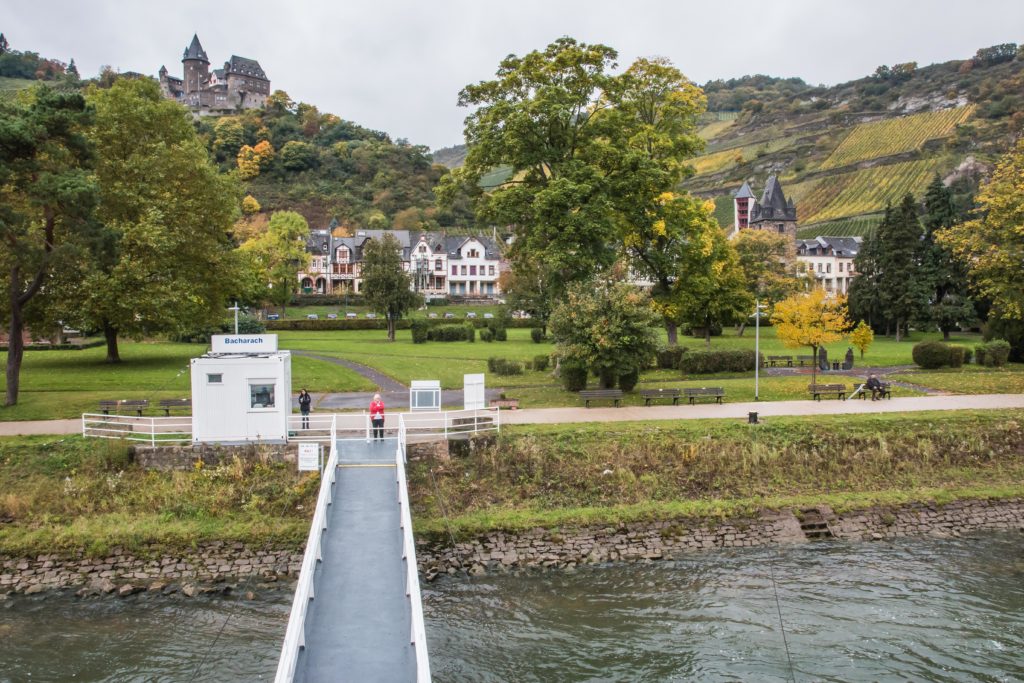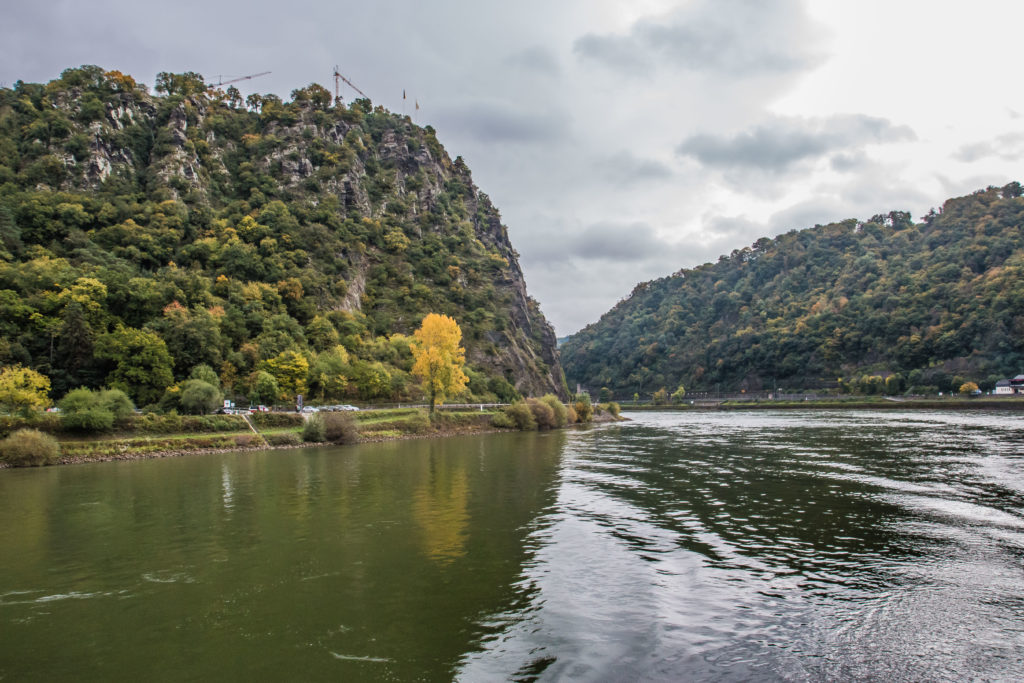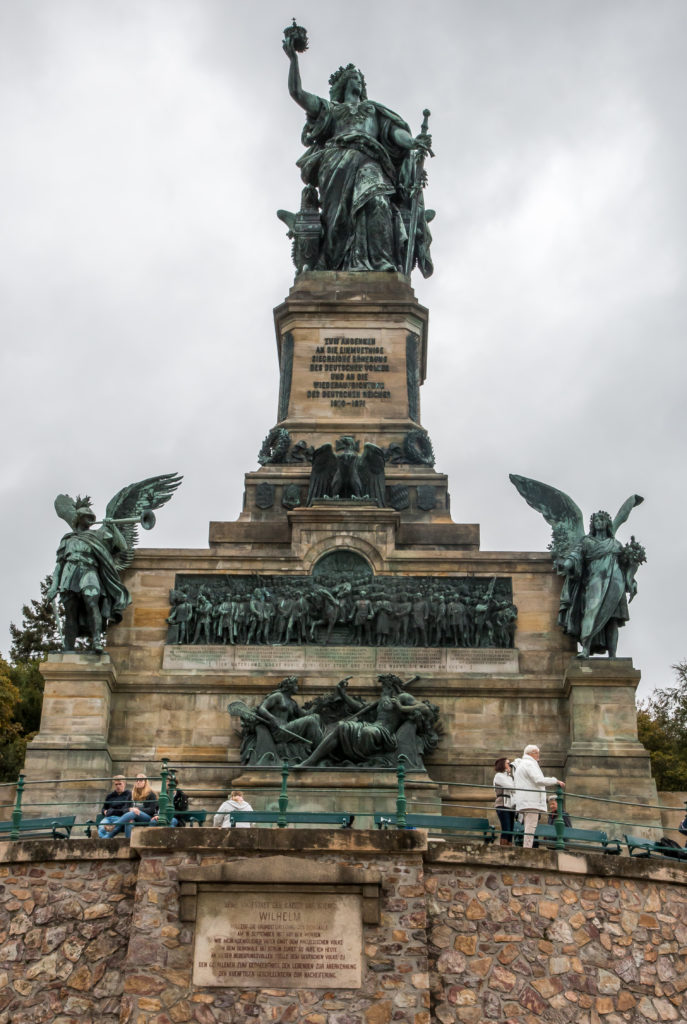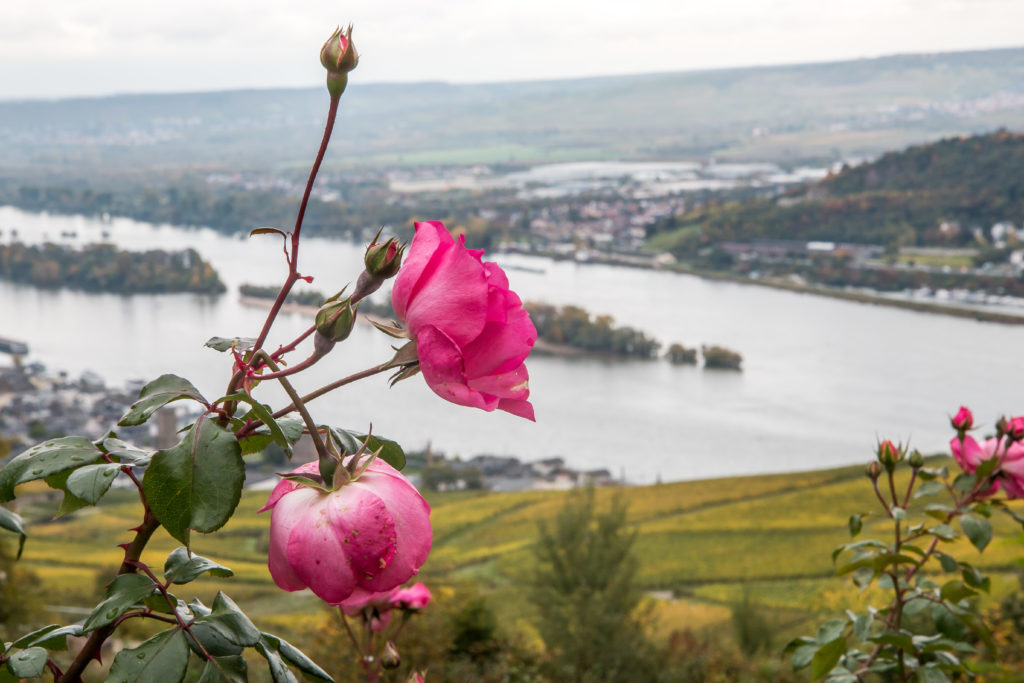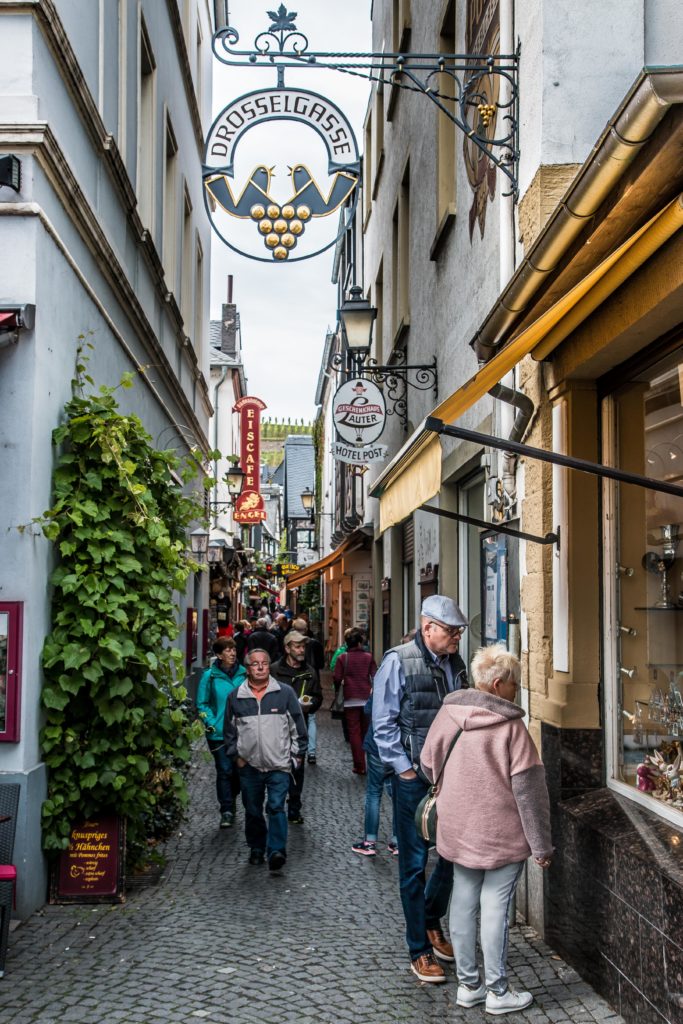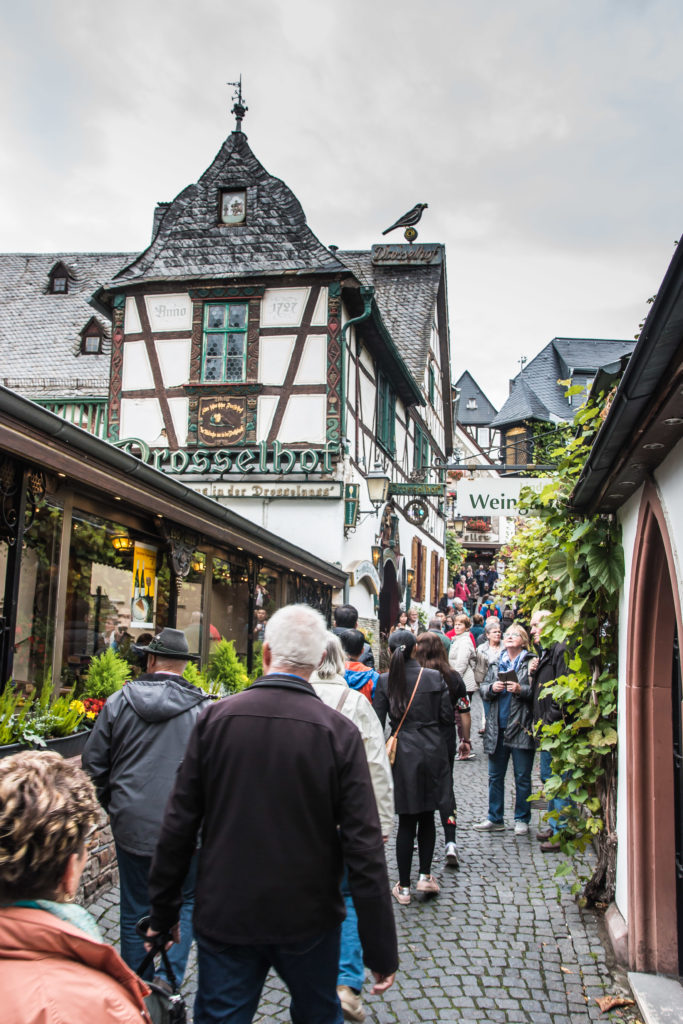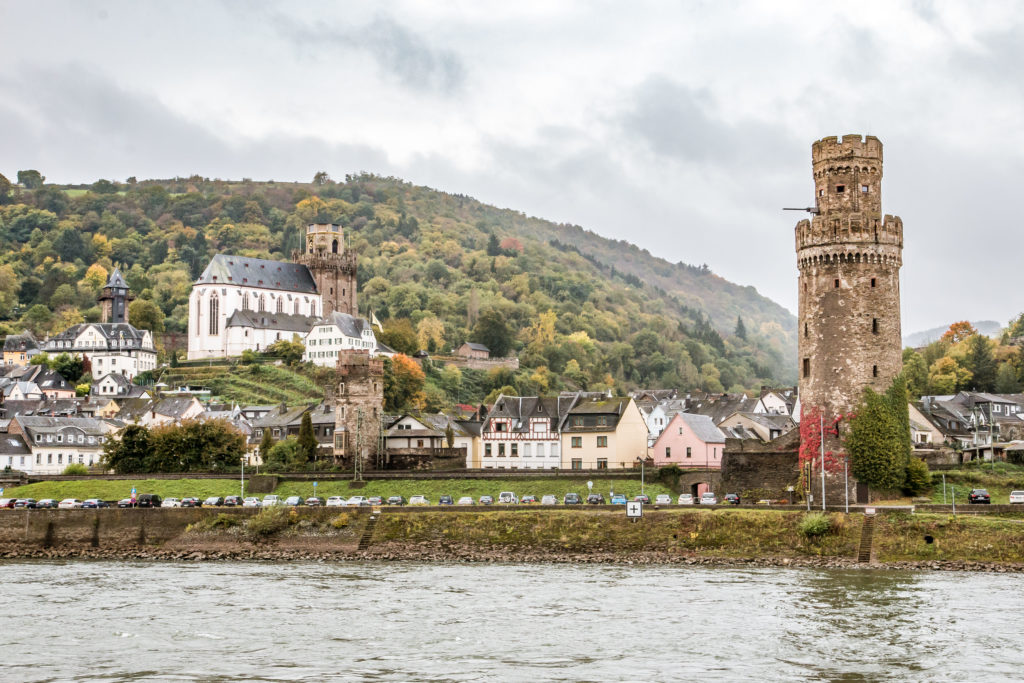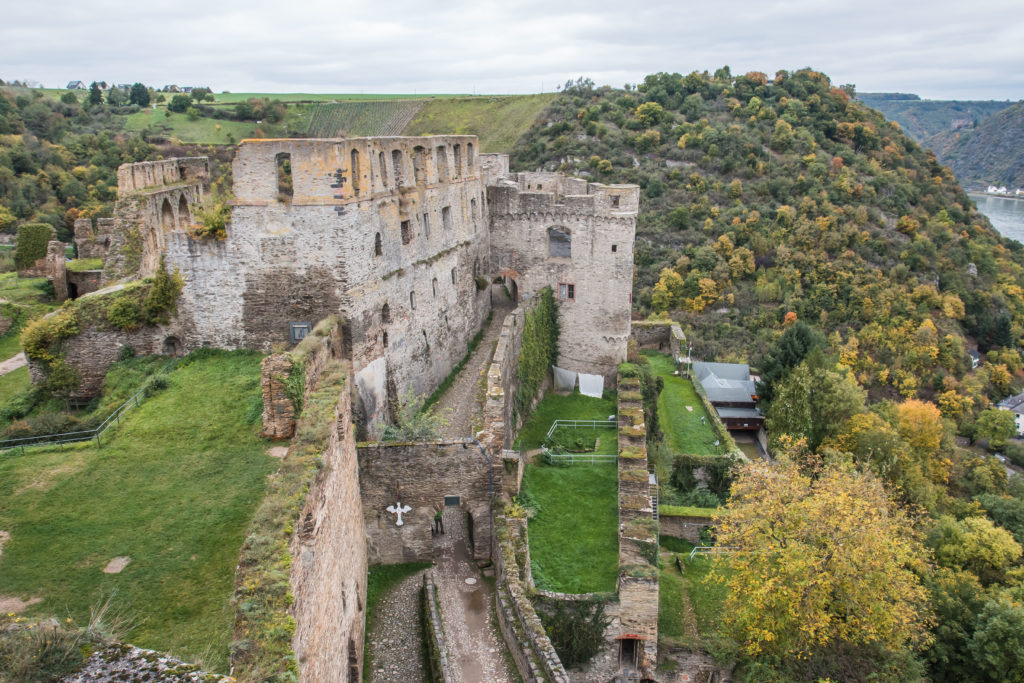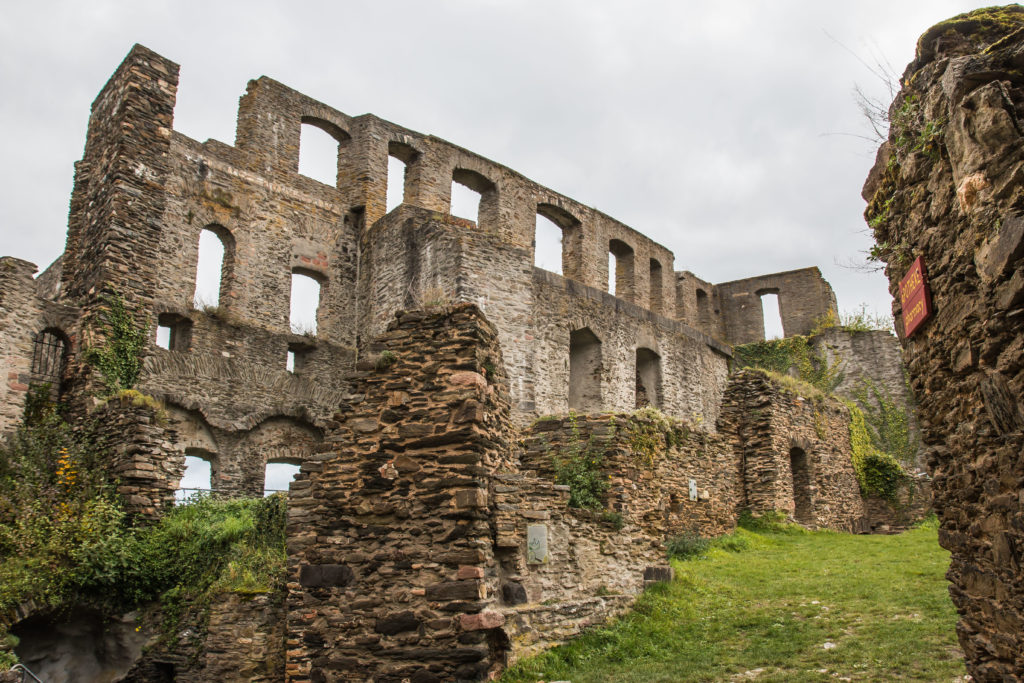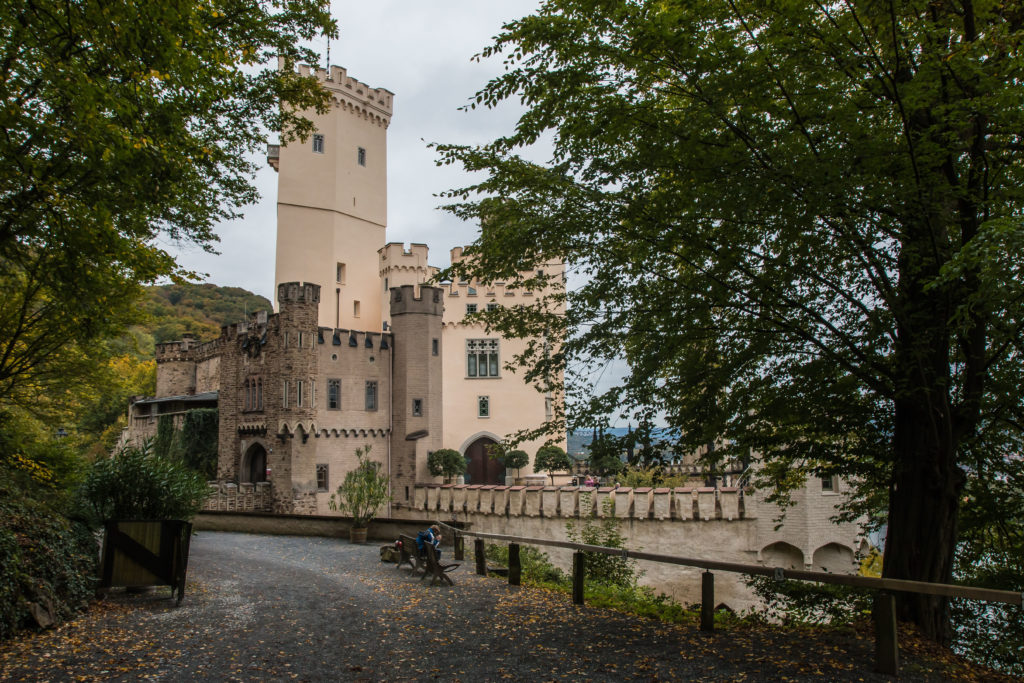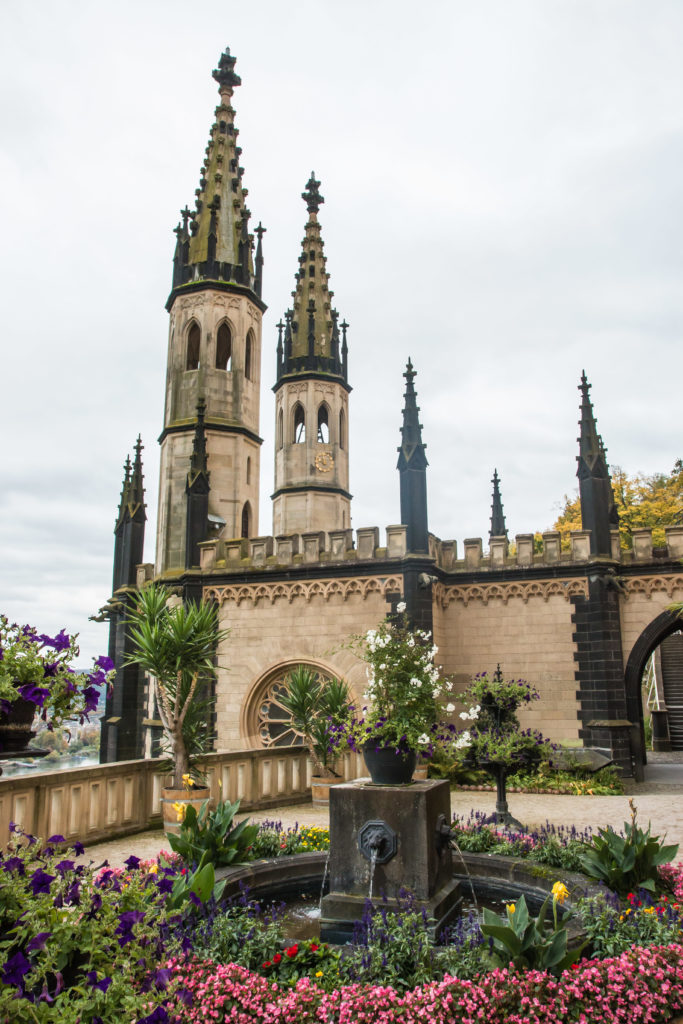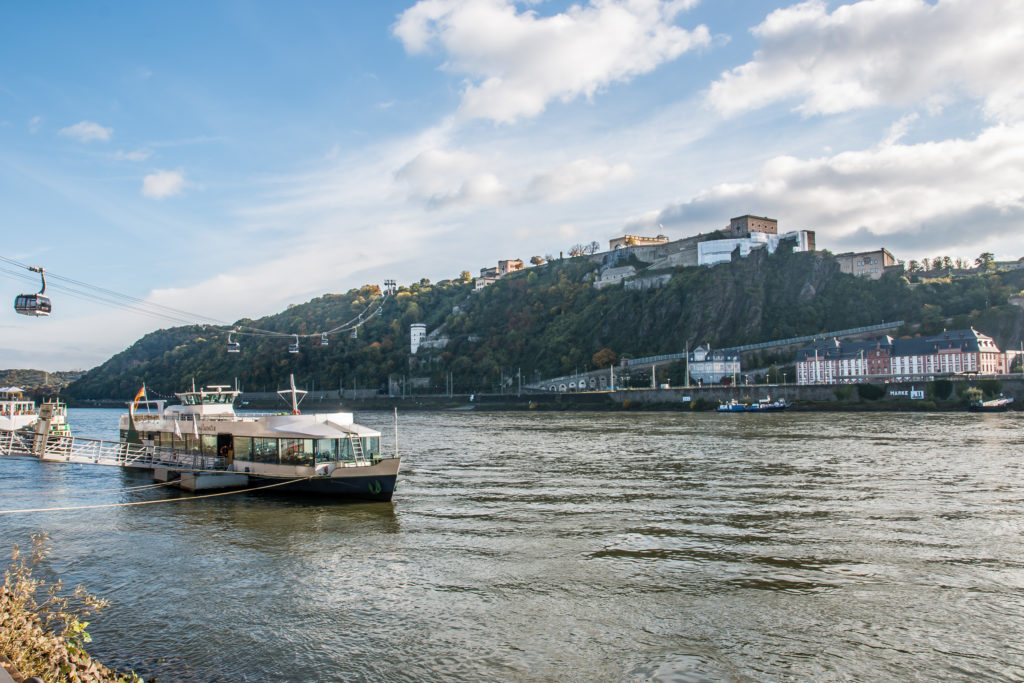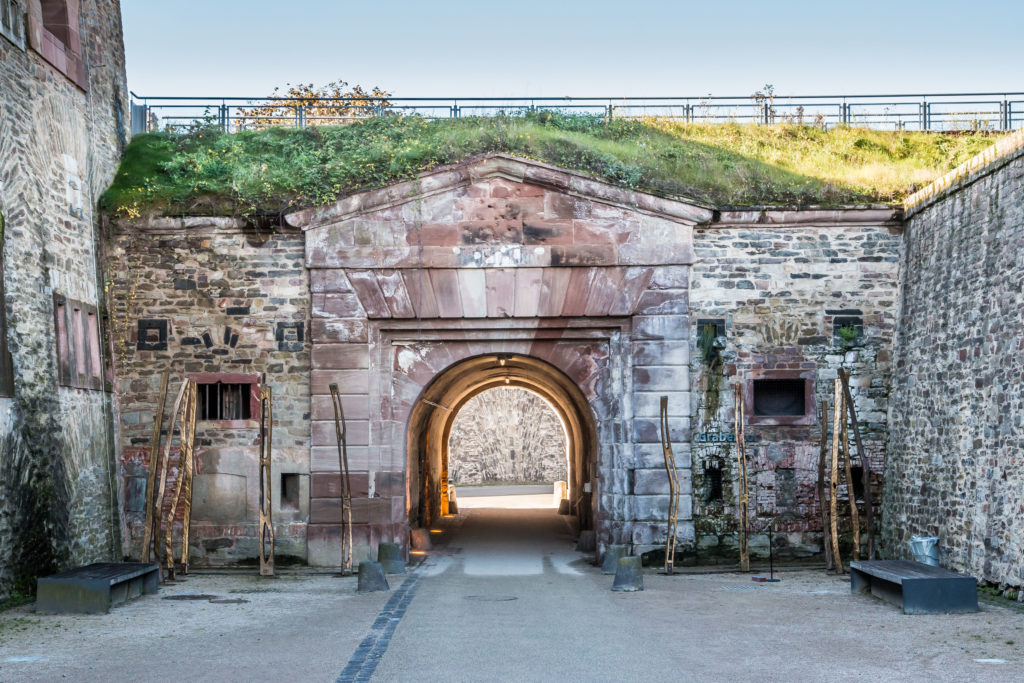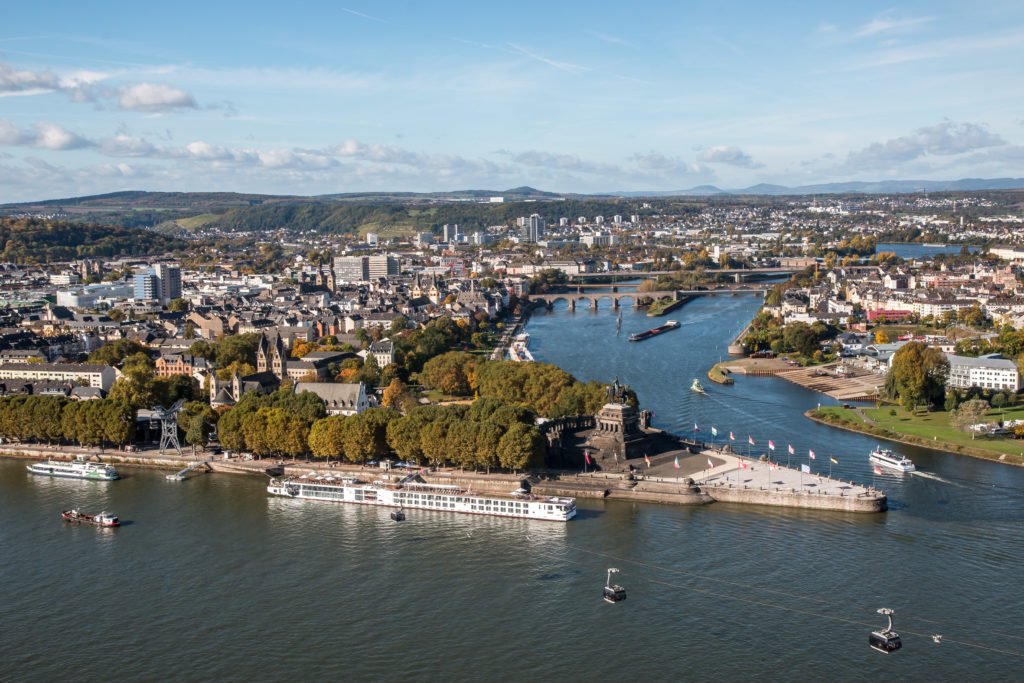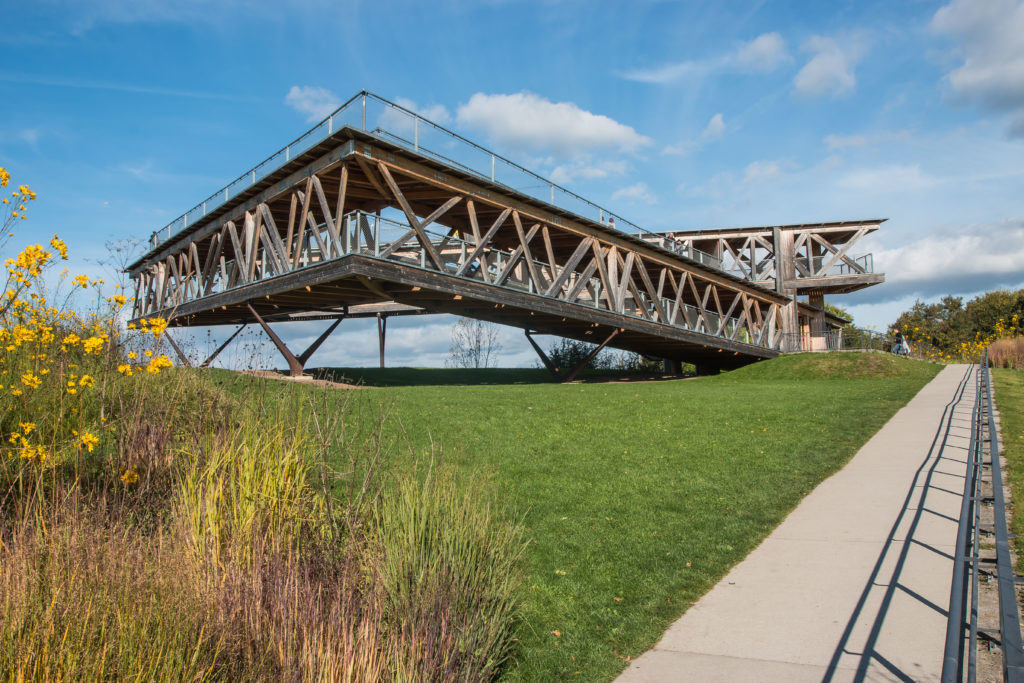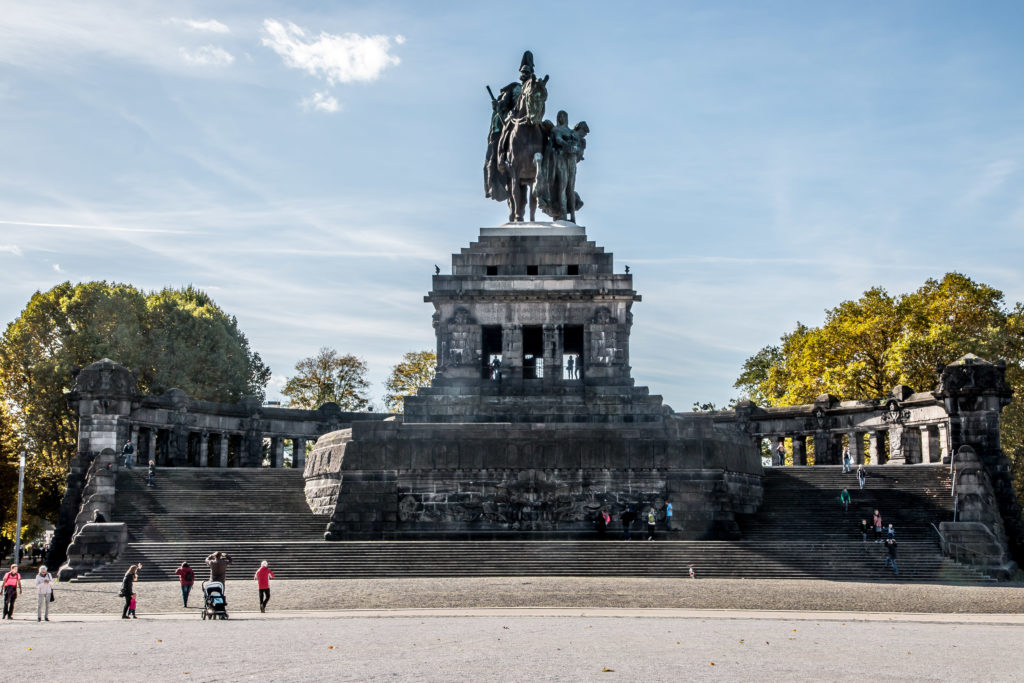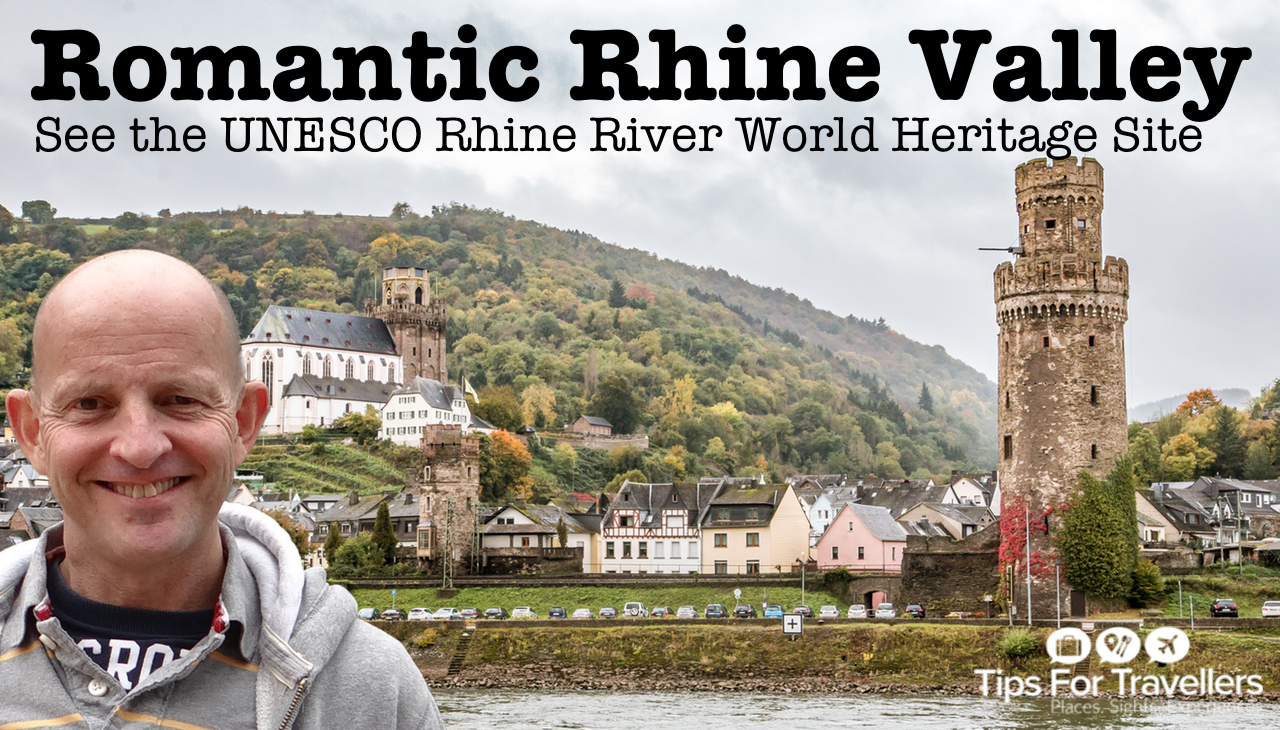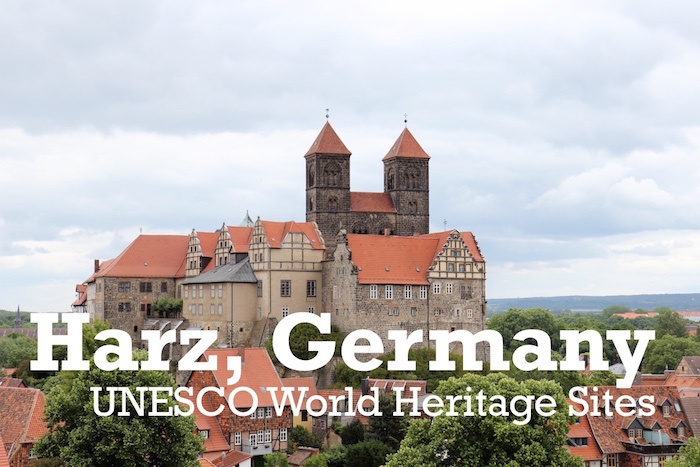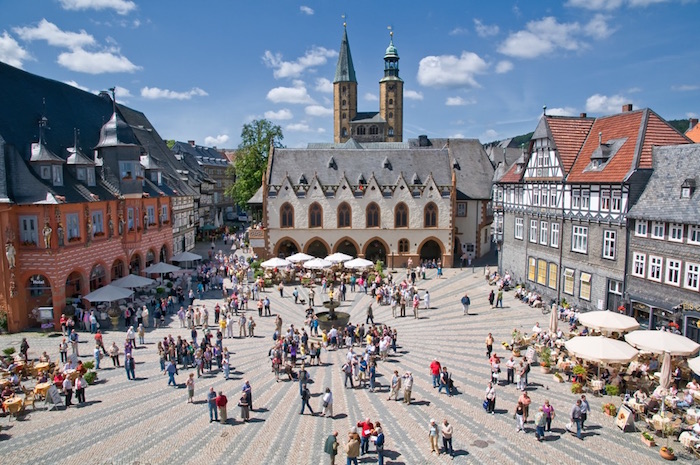UNESCO World Heritage Rhine Valley. What To See, Where To Go – And Why!
In this article I am going to reveal the delights of the stretch of the Rhine River in Germany that is the UNESCO World Heritage Rhine Valley. Many have travelled through it as whilst on a Rhine river cruise, but I explored it on land to discover its true beauty, history and diversity. Come with me on my journey and find out why I think you should too!
Wine Bottle Memories
It was about half an hour driving from Frankfurt Airport when the road abruptly changed direction, and I was driving parallel to the Rhine River. The transformation in the scenery was instantaneous and remarkable. The motorway landscape disappeared and the fast flowing river running briskly on my left replaced it. Curvaceous hills, meticulously lined with lush green lines of vines, appeared on my right. A series of grand vineyard estate houses, each with elaborate detailed roofs, nestled within this greenery. The houses looked familiar as I recalled growing up with the images of these on the labels of the German wines so loved by my parents.
I realised my days exploring the Rhine Valley were going to be rewarding. The German Tourism Board invited me to spend time exploring the stretch of the Rhine that is a UNESCO World Heritage site, and it looked more inviting the closer I got to it.
Upper Middle Rhine World Heritage Site
Between Rüdesheim in the south (at Rhine Kilometre 526) and Koblenz further north (at Rhine Kilometre 526) as the Rhine works it way towards the ocean, is a 67-kilometre section known as the “Upper Middle Rhine World Heritage Site”. It covers less than 5% of the 1,230-kilometre river, but was awarded the prestigious accolade due to its historic significance, beauty and the (frankly almost over-the-top) proliferation of castles and fortresses. Rather than getting a brief glance at this remarkable section of the Rhine on one of the seven-day river cruise vacations that travel between Basel and Amsterdam, the German Tourist Board invited me to explore it on land. They felt it merited more time and was worthy of land-based exploration. They were correct. While there is no doubt seeing it as part of a Rhine River Cruise is fabulous, slowing down and touring this feature-packed section was magical.
Dotted through the region are a number of attractions listed among the “Top 100 Sights and Attractions in Germany”.
Beginning, Middle and End
I stayed at three overnight centres. Rüdesheim at the start of the UNESCO section, Oberwesel towards the middle and finally Koblenz at the end. Each gave easy access to the sights and attractions. There are, of course, other quaint and interesting towns to stay at once touring the area, but I recommend these. Details of the hotels I stayed at are at the end of the article.
Must-See Sights and Must-Do Activities
#1: Boat Cruise From Rüdesheim to Sankt Goarshausen (Loreley Rock)
I started my exploration of the UNESCO Rhine Valley from the river on one of the boat trips that travel from Rüdesheim to Sankt Goarshausen, which is close to the Loreley Rock. It gave me a great overview of the Rhine, the manytowns and castles packed along its banks and what the area had to offer. I knew I was not going to have time to visit all the castles whilst here, and so the cruise ensured I appreciated the breath and scale of what was strewn across the region.
I went on a KD cruises trip on a boat called “Germania”. The cruise, which lasted around two hours, departed at 9:15am, although it also left at 11am and 14:15pm. I bought my tickets, which cost around nineteen euros one-way, at a booth close to where it departed. Advance tickets were on sale at the Tourist Office located across the road.
Whilst I could have cruised back, I returned by train. The station was just five minutes walk from where the boat docked, ran every hour, took half an hour and cost under seven euros. It meant I could pack more into my trip.
The boat cruised past at least 18 castles and fortresses. I lost count at 18 anyway! The multilingual commentary broadcast during the trip explained what they were, along with a brief history. I felt the most impressive were the Mauseturm (Bingen), Rheinstein and Reichenstein Castles (Trechtingshausen), Sooneck Castle (Niederheimbach), Heimburg Castle (Niederheimbach), Furstenberg Castle Ruins (Rheindiebach), Stahleck Castle (Bacharach), Stahlberg Castle Ruins (Bacharach-Steeg), Pfalzgrafenstein and Gutenfels Castles (Kaub), Schonburg Castle (Oberwesel) and Katz Castle (Sankt Goarshausen).
As the boat made its way along the river it glided past a series of quaint towns dotted along each side of the Rhine. The boat called in at Bingen, Assmannshausen, Bacharach, Kaub and Sankt Gaor to embark and disembark passengers before the cruise ended at Sankt Goarshausen.
The highlight for many passengers, and the reason lots seemed to be doing the trip, was the Loreley. This large 132-metre high rock is where the 1,230 kilometres Rhine is at its narrowest and deepest. It used to be a treacherous section for boats to navigate. A legend tells of a Golden-haired Siren high up on the craggy rock face that would distract sailors with her looks and singing, causing them to wreck their boats on the dangerous rocks below. Poems were written about the story and out to music, and sightseeing boats, including the Germania, played these as they sailed around the Loreley.
Find out more about the boat trip at http://www.kdrhine.com/rhineschedule.htm
#2: Niederwalddenkmal (Niederwald Memorial) by Cable Car
As I sailed out of Rüdesheim on my boat trip I had seen the vast Niederwalddenkmal memorial perched high above the Rhine. On return from the boat trip, I headed up on the cable car to visit it. This was a short ten-minute walk from the railway station.
A return trip on the cable car (Seilbahn Rüdesheim) cost eight euros. The cabins were open sided and held up to four people. They rose up from the station and silently drifted over vineyards, revealing staggering views of the Rhine and countryside. It was quiet and peaceful as I softly rose up and had plenty of time to enjoy the views. Once on top I strolled around the neat gardens, full of brightly coloured rose bushes, and soon reached the massive 38-metre tall monument. It was quite a spectacle.
The Niederwalddenkmal was built to commemorate the unification of Germany in 1871 after the end of the Franco-Prussian War. Work started on the structure in late 1871, with the foundation stone being laid by the first German Emperor, Kaiser Wilhelm I. It was eventually completed in 1883. On top of the stone structure is a magnificent, and dramatic, 10.5-metre statue of a female figure called Germania holding the crown of the emperor in one hand and the Imperial Sword in the other.
Below the monument was a wide viewing platform looking across the Rhine Valley below. The scenery from here was spectacular. I spent a lot of time taking it in before pulling myself away to take a walk around the carefully maintained and neat park. Finally stepping back onto the scenic cable car for another gentle ride enjoying the views.
Find out more about the cable car at http://www.seilbahn-ruedesheim.de/en/selection/
#3: Drosselgasse in Rüdesheim
The next attraction I spent time in was one of the German Top 100 sights: the Drosselgasse. This is a narrow 144-metre long street in the old town. It was packed full of people drawn to the craft stores, wine shops, bars and restaurants. There was a palpable buzz and excitement along the street as travellers stopped to pose and take pictures in front of the intricate storefronts, underneath the quirky old signs or inside open sided bars playing live music.
I walked up and down the Drosselgasse multiple times and each time I discovered new gems and surprises I had missed, many of them above me in the form of quirky old signs. Other treats were carefully carved wooden Christmas decorations and excellent restaurants serving traditional German food. I returned here a few times during my stay to have a meal and enjoy the excitement and vibe of this slim old street.
Find out more about Droselgasse at http://www.germany.travel/en/towns-cities-culture/top-100/content/ruedesheim-am-rhein.html
#4: Oberwesel Town Walls
After staying in Rüdesheim I headed to Oberwesel for my next overnight stay. It took round an hour to drive there. For dinner I drove up a steep and winding mountain road to the Auf Schonberg Castle. It now operates as a luxury hotel with a renowned restaurant, so eating here gave me a chance to see some of the insides of this magnificent castle perched high above the town.
Oberwesel is a medieval town. Wealthy and powerful, the residents built formidable city walls to protect themselves. These were over 2.5 kilometres long with 22 towers strategically positioned at regular intervals. In great condition, they are the best-preserved fortifications in Germany with an impressive 16 of the towers surviving.
The hotel owner recommended that I walk around the walls. Although there are gaps where some stretches have not survived, I was able to stroll around large sections of them. They gave me an overview of many ornate buildings within the ancient city. However, what I liked even more was that I was able to climb up some of the surviving towers to take a look at the city from up high, and importantly, down onto the Rhine to see the passing river traffic from a high vantage point.
The old city within the walls has many striking buildings and a walk through the main streets was also a feast, taking in the variety of architecture spanning centuries.
After my stay here I moved on and headed past the point that the boat cruise had taken me, headed further into the UNESCO region towards Koblenz.
Find out more about Oberwesel at http://www.oberwesel.de/en/tourist-information/
#5: Castles you don’t see on the boat trip
As I had not seen the castles and fortifications in this stretch of the UNESCO World heritage stretch of the Rhine on my boat trip, I decided this should be the time to visit some.
I chose two significant ones between Oberwesel and Koblenz, both of which I recommend.
The first was Rheinfels Castle, which is just outside of Sankt Goar and close to the Loreley. I chose this as they are the largest castle fortifications on the Rhine, with sections dating back to 1245. It is largely ruins but I still enjoyed exploring the vast sprawling complex. It has vast thick walls and magnificent views from one of the remaining turrets across to the towns and Rhine. There was also a fascinating museum telling the history of the castle, along with a sprawling model along with models of soldiers and the armies both protecting and battling to take the castle.
The property was busy, especially with families. I was intrigued at how this place seemed to inspire and excite younger children, who were running about excitedly exploring the ancient complex.
Find out more about Rheinfels Castle at https://www.st-goar.de/17-1-rheinfels-castle.html
I visited the Stolzenfels Castle next because its gothic style was so unusual and different to other castles within the UNESCO area.
The original castle was built in 1250, but the French destroyed it in 1689. The man who eventually became King Fredrich Wilhelm IV of Prussia was given the ruined building in 1823. He commissioned the current castle, which was built between 1836 and 1842, as a summer residence. It is positioned very high up on the hill and it took a long walk on a winding road through dense thick forest to reach it. The trip was worth it. Inside the castle are magnificent buildings, all very ornate and grand. The gardens within the walls are spectacular and beautifully crafted. Tours were offered through the rich interior full of classic paintings, weapons and armour.
Find out more about Stolzenfels Castle at http://www.koblenz-tourism.com/culture/koblenz-attractions/stolzenfels-castle.html
After my day exploring castles I headed into my hotel in Koblenz. My last stop and stay and the end of the UNESCO World Heritage stretch of the Rhine. And home to two important places.
#6: Ehrenbreitstein Fortress Koblenz by Seilbahn Koblenz
After my night in the city, I headed back down to the Rhine in the morning. There was a wide pedestrian boulevard running along the river, making it a pleasant walk in the early morning sunshine. I strolled along, watching the busy traffic plying up and down this busy stretch of the river. Dotted along the broad pavement were coffee shops, ice cream stalls and restaurants. As I walked down the banks I could not miss the domineering presence of the large Ehrenbreitstein Fortress on top of the mountain of the same name. This was my first destination of the day.
As I got closer, I could see large glass sided cabins of the Seilbahn Koblenz ferrying over the river from the city side to the top of the vast mountain on the opposite bank. Large cabins, holding up to thirty people each, ran constantly. They swept up from the bank, rising high above the river and cargo boats on the Rhine into the station at the top of the mountain. Once on top there was a vast neat park and the visitor centre of the fortress across the other side.
The Ehrenbreitstein Fortress stands 118 meters above the Rhine. It was built as an enormous complex to protect the strategically important section of the river where the Moselle and Rhine rivers converge. As I toured through the enormous place I learnt that it was designed to be impregnable, with internal rings of defence walls and huge thick outer walls that could withstand massive bombardments. These succeeded and no enemy was able to storm the fortress. Although the inhabitants once were forced to surrender to French forces who, unable to make their way inside it, besieged it for a year until the starving troops finally gave it up.
It is vast and I kept discovering new sections and displays. Finally I found my way out into a large plaza. In addition to bars and open-air restaurants, there was a viewing platform overlooking Koblenz. From here I could see city with the Moselle running in one direction and the Rhine running down below. Where the two met was the Deutsches Eck, my next spot to visit. The sight was stunning.
I made my way back through the large complex and back out into the park. I headed across to the modern viewing platform built in 2011. Unlike the fortress, which charges to enter, this was a free way to get the view. I walked up to the top and although great view, it was not as spectacular as the one from the fortress itself.
Find more about the Seilbahn Koblenz at https://www.seilbahn-koblenz.de/homepage.html and Ehrenbreitstein Fortress at http://www.koblenz-tourism.com/culture/koblenz-attractions/ehrenbreitstein-fortress.html
#7: Deutsches Eck
After the riding back down on the cable car, I walked the short distance to the Deutsches Eck memorial, located where the Moselle River joins the Rhine.
Like the Niederwalddenkmal in Rüdesheim, this is a magnificent and grand memorial from a similar period. It was built to celebrate and recognise the first German Emperor, Kaiser Wilhelm I, after he died. Erected in 1897, it soars an impressive 37 metres. The statue of him riding a horse on top is over 14 meters high. It is, though, a replica as the original statue was destroyed during World War II. The plinth survived but was left empty until after the reunification of post-war Germany in 1990. The new statute was funded privately and erected in the 1990s.
The memorial and the area around it was a big draw for visitors. People thronged the place, clambering over the plinth and posing for pictures where the two rivers meet.
My stay in Koblenz ended my tour of the UNESCO World Heritage Site of the Upper Middle Rhine Valley.
Find out more about Deutsches Eck at http://www.koblenz-tourism.com/culture/koblenz-attractions/deutsches-eck.html
Watch My Video about The Rhine Valley
Final Thought
The 67-kilometre stretch of the Rhine River between Rüdesheim and Koblenz is a feast of spectacular scenery. It is crammed full of castles and fortresses. The myriad of quaint towns, each with their own stories, are inviting and attractive. All of this warrants time to explore. Passing through the UNESCO World Heritage Site of the Upper Middle Rhine valley on a river cruise may be wonderful. There is much to see from the river, but it is more magnificent if you take time to dwell there. I am so glad I was given the opportunity to do so. I recommend you consider doing so too.
My Travel Details
I travelled as a guest of Lufthansa, the German airline, and the German Tourist Board.
Find out more about Germany on the German National Tourist Board official site, Facebook, Twitter and Instagram. You can follow Lufthansa on Twitter and Facebook
I stayed at the following hotels:
- Rüdesheim: Weingut Magdalenhof
- Oberwesel: Hotel Restaurant Weinhaus Weiler
- Koblenz: Hotel Hohenstaufen

